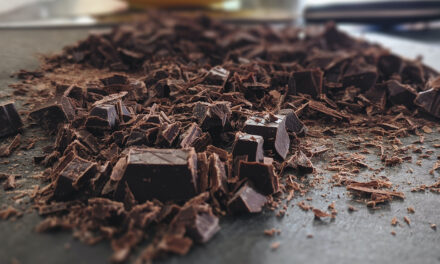Alaskan Husky – These dogs are bred for their high speeds and endurance. The Alaskan Husky has a background of hound crosses and Siberian Husky.
Alaskan Malamute – The Alaskan Malamute was developed by the Mahlemut tribe of Alaska. One of the larger northern breeds, Alaskan Malamutes are too slow to competitively compete in most dog sled races.
Bungee Neckline – Neckline that has give and flex with the movement of the dog.
Canis Polaris – Siberian Husky Racing Kennel from the Netherlands.
Centerline – This is the section of the gangline that runs down the middle of the dogs. This is the main rope, and it has to be strong enough to hold the entire team. This section is also referred to as the towline. See also towline.
Dog Door – A portal that is installed into an existing house door that allows dogs to come & go as they please. A person must be certifiably crazy to use such an item.
Fleece – This is the term used for the fabric made from recycled polyester. This fabric has great insulating qualities, and is usually used on cold weather clothing because it keeps the body warm, and it is very durable in harsh conditions.
Gangline – The gangline refers to the rigging or rope that connects the dogs to the sled or wheeled vehicle. This includes the tuglines, towlines, and necklines. Some mushers use the term gangline to describe the centerline of the rigging.
Gee – This is the command used by most mushers to make the lead dog(s) turn the team right.
Handler – The dog handlers are very important to larger sled dog teams. They help hook-up dogs, put on harnesses, booties, and feed the whole team. What a lot of work! This really helps mushers before and during races to have some extra help with the dogs. Especially if they’re really tired!
Harness – A piece of equipment worn on a dog to transfer the energy of pulling from the dog, to the item being pulled. Usually made from webbing as the main arrangement of straps, and fleece or neoprene as padding in the “high pressure” areas on the dog.
Haw – This is the command used by most mushers to make the lead dog(s) turn the team left.
Hike – The command used by most mushers to get the team moving.
Husky – All northern breed dogs. Usually displays a heavy coat.
Iditarod Trail Sled Dog Race – The Iditarod Trail Sled Dog Race is refered to as the “Last Great Race” or the “Iditarod”. The race is run on the Iditarod Trail and teams cover more than 1,000 miles of Alaskan terrain to reach the small northern town of Nome. Mushers brave high winds, freezing temperatures, and barren tundra plains.
Jeff King – Being one of the top competitors in the world of long distance sled dog racing, Jeff King has won both the Yukon Quest and the Iditarod as of the year 2006. He has four Iditarod championships under his belt, and one Yukon Quest win. He is also well known for being a great inventor of dog sledding equipment. Pioneering the tail dragger sled (sit down sled), it is now one of the top sled dog designs for long distance mushing.
Joe Redington Sr. – Known as the “Father of the Iditarod,” Joe Redington Sr was a huge part of making sled dog racing a bigger sport. Along with Dorothy Page he developed the Iditarod, which still is the most well known dog sled race of today.
Lead Dog – The dog(s) at the front of the dog team that is responsible for taking (or ignoring) commands to keep the team going in the desired direction. Usually credited with being the “smart” dog of the team, it has been found that you actually want the most obedient dog out front. A smart dog can make the musher THINK the team is following his or her direction, while actually tracking small game or leading the team away from the desired location. Far better to have a smart MUSHER, than a smart lead dog.
Mackenzie River Husky – The Mackenzie River Husky refers to populations of sled dogs developed in northern communities. Donna Perry produces the most known dogs of this type of dog which isn’t considered a breed.
Martin Buser – As of the year 2006, Martin Buser has won 4 Iditarod races. After winning the 2002 Iditarod race, he became the first person to ever complete the Iditarod in under 9 days time. He is married to Kathy Chapoton, and together they have two sons, Rohn and Nickolai.
Mitten – A glove that allows your four fingers to be enclosed together, and your thumb enclosed by itself. This allows you to have some dexterity, but also allow you to keep your fingers warmer by having them sit next to each other.
Rick Swenson – Rick Swenson has won the Iditarod more than any other racer in history. He has one it five times; 1977, 1979, 1981, 1982, and 1991. He moved to Alaska in 1973 to the town of Eureka, then moved to Two Rivers. As of now he has 3 children and still currently, the year 2006, is an active musher and a big part of the dog sledding community.
Siberian Husky – The Siberian Husky is a breed of dog originally developed by the Chukchi people of Siberia. They were used to pull sledges, guard families, and herd the local reindeer populations. The Siberian Husky is a medium sized dog that has been the choice sled dog of many mushers for centuries.
Sled Dog – A sled dog is a dog trained to pull a sled or wheeled vehicle over snow, ice, and even dryland via the use of harnesses and lines. There are several breeds that make up the majority of today’s sled dog population. Siberian Huskies, Alaskan Huskies, Eurohounds, and Alaskan Malamutes. Each breed differs in its capabilities and physical ability.
Sledge – A large sled used for transporting goods and equipment across ice and snow.
Snowhook – A snowhook is a claw like hook usually made of aluminum used for securing a dog sled team in the snow.
Steady – A word that some mushers use to slow their team down.
Susan Howlet Butcher – In 1989 Susan Howlet Butcher became the second woman to win the Iditarod and later she became the second person to win the Iditarod four times. “I do not know the word ‘quit.’ Either I never did it, or I have abolished it.” -Susan Butcher
Towline – The towline is the part of the ganline setup that runs down the middle of the dogs. It is usually made of polyethylene or cable (for larger teams). This section of the gangline is also referred to as the centerline. See also centerline.
Tugline – The tugline is the part of the gangline is the rope that connects the dog’s harness to the towline or centerline.





